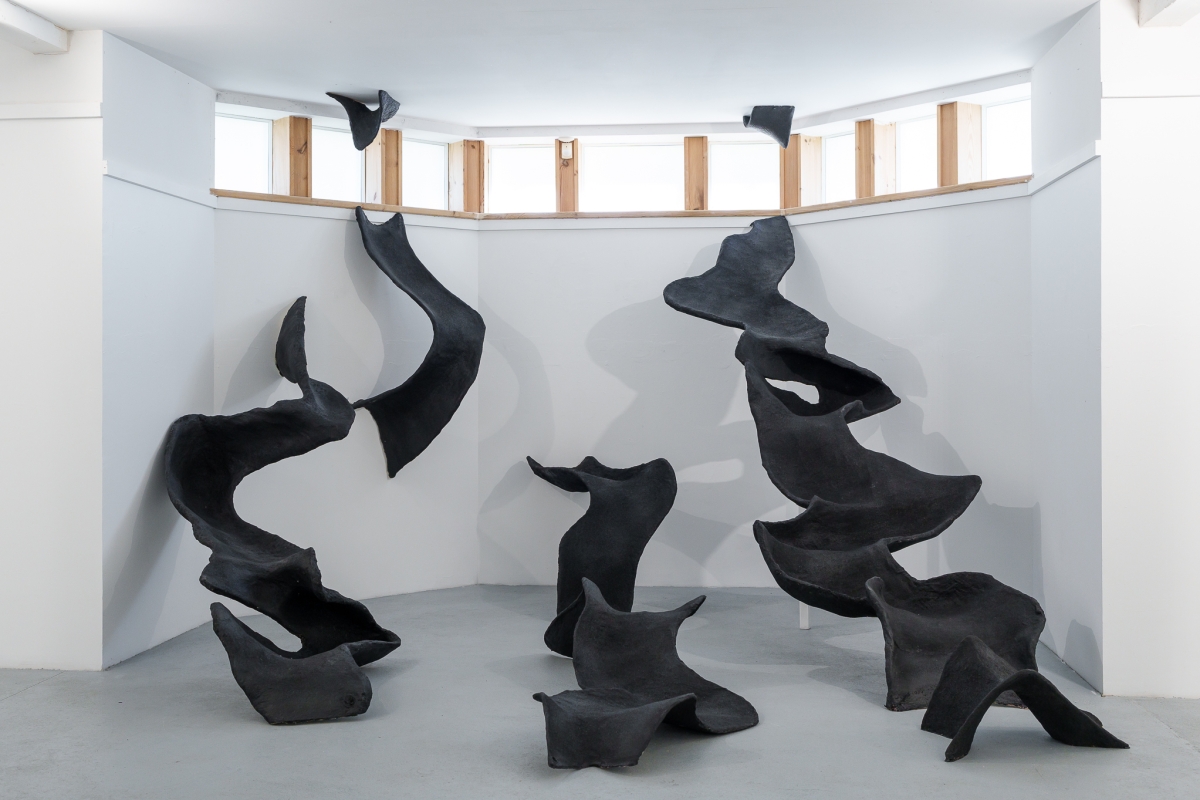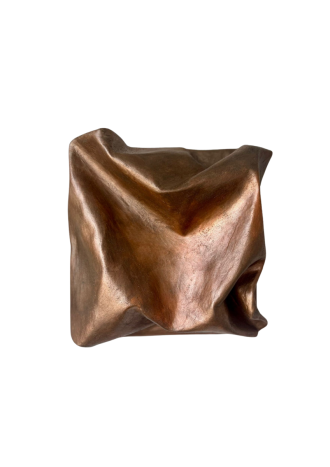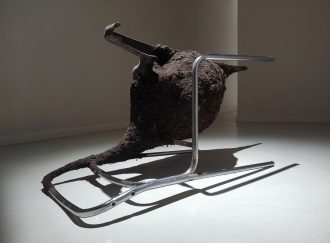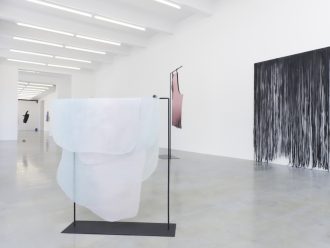The visual arts exhibition ‘How Heat Slides Across Surfaces’ organised by the Pamėnkalnio Gallery is on display from 21 April to 25 May at the Antanas Mončys House-Museum in Palanga. Last year, the exhibition was showcased at ‘Hawerkamp 31’, a project space in Münster in Germany. The resort town aura of Palanga seems to enhance the exhibition’s mood and its exploration of landscape, collectivity, isolation and transience. ‘Everything fades’ resonates not only as a potential exhibition motto, but also as the artists’ acceptance of the inevitability of fading feelings, memories and beauty. After all, ephemerality is a fundamental aspect of nature and art, reflecting the ongoing transformation of existence. The exhibition curator Milda Dainovskytė and the architect Vytautas Gečas interweave works by artists of diverse genres (Linas Blažiūnas, Vytenis Burokas, Algirdas Jakas, Agnė Juodvalkytė, Beatričė Mockevičiūtė, Sallamari Rantala, Ieva Rojūtė, Eglė Ruibytė, Aistė Marija Stankevičiūtė and Marija Šnipaitė) into a unified narrative about contemporary feelings, forms of communication, and identity shifts.
Ieva Rojūtė’s spatial installation One Thing You Are Slippery encapsulates snippets of everyday dialogue, transforming them into fragments of shared experience that mirror the prevailing emotional climate. Despite our society’s incessant communication, dialogue and interaction, paradoxically, we trust each other less and less. Alienation and the degradation of communication quality are embodied in a text resembling comments left by spam bots on social networks, conveying a sense of absurdity and anxiety: You are from another planet. If you want, we can get in touch. Our people don’t know how to do that. You are not a resident of planet Earth, but you look exactly like one. Are we your food? Will you kill me? Or leave me be?

Exhibition ‘How Heat Slides Across Surfaces’ organised by the Pamėnkalnio Gallery at the Antanas Mončys House-Museum in Palanga. Photo: Gediminas Sass
Today’s world is rife with social tensions and mistrust. As AI can generate convincing and coherent text, we instinctively seek genuine human imperfections, however crude, that ironically uphold realism. We value ‘humanness’, the flaws and spontaneity that affirm that communication is between real individuals, not humans and machines. The lyrical subject of Rojūtė’s piece proclaims: It’s not me who shuts down the energies. There are forces working through me. This suggests a feeling of being directed by external forces like technology or social norms, affecting behaviour and inner life. Intriguingly, the title One Thing You Are Slippery can be read as a criticism of people becoming increasingly elusive, or as praise for adaptability in a rapidly changing world. The work can thus reflect a paradoxical modern society where, despite the increasing communication, we often withhold vital information. The work also carries a warning: despite the sophisticated technology and human-like appearances, aliens (or AI entities) will never emulate the human essence perfectly.
In the film The Man Who Fell to Earth (1976), David Bowie plays an extra-terrestrial posing as a human on a mission to save his home planet and family. However, he quickly succumbs to human weaknesses and addictions. One moment he’s a space alien, the next, a drunken humanoid engrossed in multi-screen scrolling. The film demonstrates how envisioning aliens frequently results in facing distorted reflections of ourselves, much like those in a funhouse mirror. Thus, it’s compelling to observe Aistė Marija Stankevičiūtė’s sculptural installation Fliers. It emerges as an exotic cosmic organism, unfettered by earthly constraints, evoking deep reflections on our interactions with others, the unfamiliar, and our individual encounters with alienation. In her work, the concept of space transcends physicality, and becomes a living entity, woven together by unfamiliar and extra-terrestrial elements.
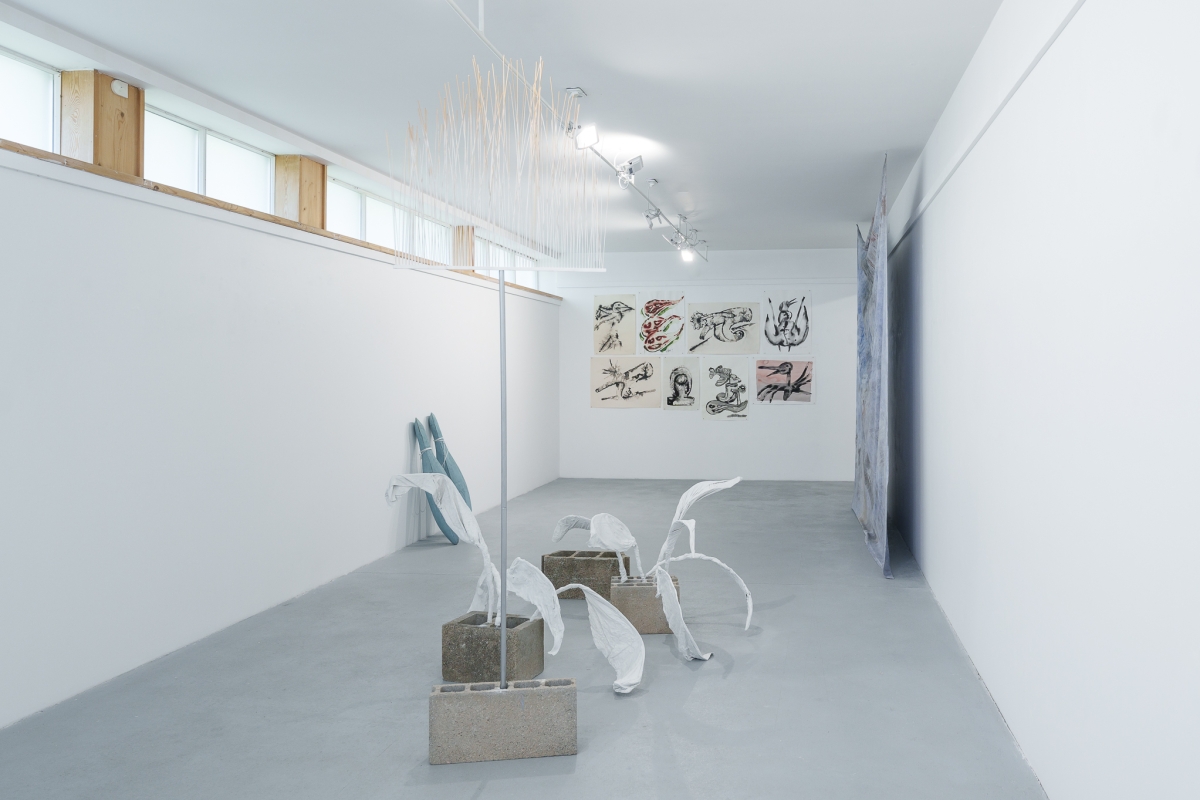
Exhibition ‘How Heat Slides Across Surfaces’ organised by the Pamėnkalnio Gallery at the Antanas Mončys House-Museum in Palanga. Photo: Gediminas Sass
Accustomed to drawing a line between humans and nature, considering ourselves as the dominant species, we now confront the possibility of re-integrating ourselves into nature. This paradigm shift is prompted by the realisation that the objects we engineer have begun to outpace nature’s own capabilities, broadening the existing categories of the physical world. Objects lose their banality when they symbolise more than their practical function, assuming meaning and significance. For instance, Marija Šnipaitė’s geta-like objects in Day By Day create a 16-step narrative, with each step representing various life situations and emotions. This encompasses moments of stillness for reflection, steps backward for reassessment, and leaps forward. In the artwork’s reality, each physical step occupies a separate, parallel universe, suggesting a vast array of universes where each alternative timeline exists in its own dimension. This notion contrasts with linear time, where time flows uni-directionally, and events have singular consequences. The piece endorses a new, non-linear universe of images and created objects, ultimately to be accepted as part of nature. It raises the question of whether such an interpretation of the world could also be a tactic of its creation.
Beatričė Mockevičiūtė’s piece Asukas reevaluates the transparency of daily life. The delicate artwork is nearly invisible, revealing itself only through light reflections or touch, and celebrates the value of subtle, everyday moments that demand keen perception. Asukas aesthetically narrates the significance of fleeting everyday moments that necessitate a keen sensitivity to perceive. Linas Blažiūnas, in his River of Light series, orchestrates an optical symphony with his light paintings, exploring the intersecting paths of light, particularly the interplay between natural and electric light in relation to human vision. This study enhances sensory awareness and inner sight, reflecting Cartesian philosophy’s concept of lumen naturale, or the innate human ability to discern truth. Consequently, a multifaceted projection of mental significance emerges. In Blažiūnas’ pieces, the overlays of light evolve into more than just visual phenomena; they become symbolic, enabling a reflection on the contrast between light and darkness, the perception of reality and its augmentation through inner vision.

Exhibition ‘How Heat Slides Across Surfaces’ organised by the Pamėnkalnio Gallery at the Antanas Mončys House-Museum in Palanga. Photo: Gediminas Sass

Exhibition ‘How Heat Slides Across Surfaces’ organised by the Pamėnkalnio Gallery at the Antanas Mončys House-Museum in Palanga. Photo: Gediminas Sass
Meanwhile, the Finnish artist Sallamari Rantala, who is currently based in Lithuania, challenges the dominant position of the Enlightenment tradition in our society through her piece entitled It Got Dark Before We Got Out. Rantala does not reject knowledge outright; instead, she prompts us to critically examine what is prioritised or marginalised within this hierarchical framework. Her intention is to uncover alternative perspectives and ways of understanding the world. To visually convey her ideas, Rantala employs various examples of cultural distinctions, highlighting how the same finger gestures can hold entirely different meanings across different cultures. This thought-provoking demonstration encourages us to reflect on how diverse perceptions of people and cultures can complement one another, presenting opportunities for fresh and innovative approaches.
Last year in Milan, climate activists dusted Andy Warhol’s repainted BMW art car with flour. Warhol’s work serves as a testament to how crafted objects can evolve into signs and symbols, embodying distinct values or ideas. These activists insist that the art sector must not overlook the climate crisis, but contribute to its resolution, preventing artworks from being co-opted into the image strategies of environmentally damaging conglomerates. In 1979, Warhol became the fourth artist to partner with BMW, blurring the boundaries between technology and art by converting a functioning racing car into a vibrant piece of art that remained in active use on the race track. The similarity between the creation of this piece and the subsequent attack lies in its dual nature: while the artwork is revered for its aesthetic value, it simultaneously attracts criticism for its role in corporate image manipulation, prompting attempts to symbolically and visually ‘fade’ it with flour.
Perhaps the heat doesn’t merely glide over surfaces, it could scorch with full intensity in an instant, run you over like Warhol’s BMW. You wither in its presence, it either renews you or adds a decade to your age, empties your pockets, and exiles you from your own home. What lingers are echoes of a distant place and era, vestiges of what once was and what might have been. A wrinkled travel ticket in your pocket whispers of an unrealised dream of a far-off land you’ll never see. Such heat can liquefy window glass, set curtains aflame. It induces retinal detachment and parches the mouth. When you finally venture outside, you yearn to rest on a bench, but the ants, enslaved by parasitic fungi, are industriously altering the landscape (a recurring theme from last year). In the dead end of everything, an inexplicable longing takes over.

Exhibition ‘How Heat Slides Across Surfaces’ organised by the Pamėnkalnio Gallery at the Antanas Mončys House-Museum in Palanga. Photo: Gediminas Sass
